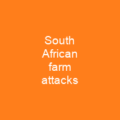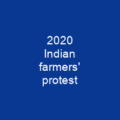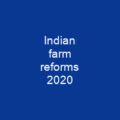What is a Farm?
A farm (agricultural holding) is more than just land; it’s a living, breathing entity dedicated to the art of food production. Imagine a vast canvas where nature and human ingenuity blend together in perfect harmony. This canvas can range from small family-operated plots to expansive, mechanized operations. With approximately 570 million farms worldwide, each one tells its own unique story of survival, innovation, and sustainability.
The Evolution of Farms
From the medieval Latin noun firma, meaning a fixed agreement or contract for holding land by feudal tenure, to today’s diverse agricultural units including specialized farms, plantations, and estates, the term has undergone significant transformation. This evolution reflects not just changes in technology but also shifts in societal values and economic structures.
Types of Farms
Dive into the world of dairy farming, where female cattle or goats are raised for their milk, which is processed on-site or transported to a dairy facility. Here, male calves may be sold for veal meat, and farmers grow their own feed. Poultry farms specialize in raising chickens and other fowl for meat or eggs, while pig farms raise pigs for bacon and other pork products, with varying degrees of free-range and intensive systems.
Farm Ownership and Structures
Historically, farm ownership was linked to status and power. However, modernization and mechanization have led to larger farms and a decoupling of political power from farm ownership. In some societies, collective farming is common, with government or local group ownership. Tenant farming and sharecropping are also prevalent, where farmers pay landowners for use of farmland or give up a portion of crops.
Global Farming Landscapes
In Europe, traditional family farms are giving way to larger production units due to industrial agriculture and mechanization. The Common Agricultural Policy (CAP) aims to increase agricultural production while providing certainty in food supplies, ensuring quality of life for farmers, stabilizing markets, and ensuring reasonable prices for consumers.
Across the Atlantic, in Australia, farming is a significant economic sector. Farm areas include buildings and use locally sourced inputs, creating jobs and higher returns on labour inputs. Small farms are specialized for specific production methods, such as dairy or piggery. In remote areas, large farms can become estates with no defined size or operation method.
In Asia, particularly in Pakistan, large farms have lower land productivity than small farms, with higher net returns per hectare for small farmers. Nepal is an agricultural country where 80% of the population engages in farming, mainly producing rice, apples, dairy farming, and poultry farming.
Farm Equipment: From Simple Tools to Modern Machinery
From simple tools to modern machinery like tractors and combines, farm equipment has evolved significantly. Today’s equipment often includes automation using satellite-guided farming. However, there is a growing concern among farmers about the lack of access to repair information due to intellectual property law restrictions.
Open Source Solutions
This has encouraged groups such as Open Source Ecology and Farm Hack to begin making open source hardware for agricultural machinery. Additionally, on a smaller scale, Farmbot and the RepRap open-source 3D printer community have begun making open-source farm tools available of increasing levels of sophistication.
Conclusion
Farming is not just about growing crops or raising livestock; it’s a complex interplay of tradition, technology, and innovation. As we look to the future, the role of farms in our society will continue to evolve, driven by both necessity and opportunity. Will you be part of this evolving landscape? The choice is yours.

You want to know more about Farm?
This page is based on the article Farm published in Wikipedia (retrieved on January 19, 2025) and was automatically summarized using artificial intelligence.







